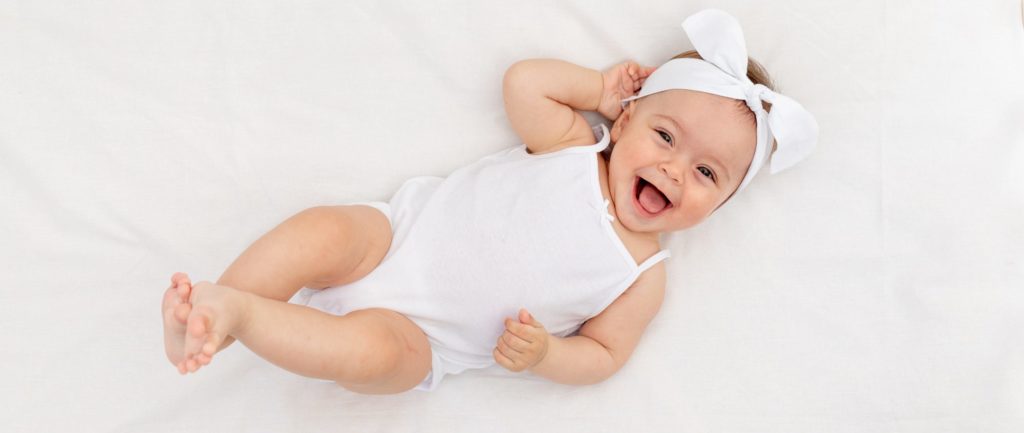Medical Disclaimer: The following content should not be used as medical advice or as a recommendation for any specific supplement or medication. It is important to consult your healthcare provider prior to starting a new medication or altering your current dosage.
Sudden infant death syndrome (SIDS) is when doctors aren’t able to find a cause for why an infant dies abruptly and unexpectedly. While the rate of SIDS continues to decrease, it remains a leading cause of death in infants. Although SIDS can’t be prevented completely, there are steps that parents and caregivers can take to reduce an infant’s risk.
What Is Sudden Infant Death Syndrome?
SIDS is the unexpected death of a baby before their first birthday that occurs without warning and has no known cause. Most SIDS deaths occur in babies younger than 6 months of age.
Although SIDS is a cause of infant death, it’s not a medical condition itself. When an infant dies unexpectedly, health care providers and law enforcement try to determine a cause of death. If they are unable to identify another known cause, SIDS may be ruled the cause of death. SIDS does not apply to infant deaths that occur due to medical conditions or accidents.
What Causes Sudden Infant Death Syndrome?
Experts don’t know what causes SIDS. However, researchers suspect that SIDS may be caused by a genetic condition or an abnormality in the brain along with a triggering event, like an unsafe sleep position or environment.
What Are Risk Factors for Sudden Infant Death Syndrome?
There are a range of known factors that increase an infant’s risk of SIDS. Some risk factors cannot be changed, including:
- Premature birth or a low birth weight
- A birth parent under 20 years old
- Certain complications during pregnancy
- Infants assigned male at birth
- A sibling who died from SIDS
Studies have also found that Black, Native American, and Alaska Native infants are at an increased risk of SIDS. Researchers have proposed several reasons for this heightened risk, including difficulty accessing prenatal care and bed sharing.
Other risk factors are modifiable, meaning they can be reduced or eliminated to decrease the risk of SIDS.
- Sleeping position: There is a strong connection between an infant’s sleep position and their risk of SIDS. Stomach and side sleeping pose higher risks for SIDS, so experts recommend infants only be put to sleep on their backs until they are 1 year old. The risk of SIDS is also increased when infants sleep in car seats, slings, or rocking devices.
- Bed sharing: Allowing an infant to sleep in the same bed or sofa as a parent or caregiver increases the risk of SIDS. This risk increases further when there are blankets, pillows, or multiple people in the sleeping area.
- Bedding and accessories: Infants are at an increased risk of SIDS when they are placed in a crib with soft bedding, crib bumpers, or loose items like blankets, pillows, or toys.
- Overheating: Overheating also increases the risk of SIDS. This can happen when a baby is dressed in excess clothing or placed to sleep in a room at a high temperature.
- Substance use: Parental substance use during or after pregnancy, including the use of tobacco, alcohol, and illegal substances, increases the risk of SIDS.
- Lack of prenatal care: Infants have a higher chance of dying from SIDS if their birth parent didn’t have access to or receive sufficient prenatal care.
- Swaddling: Wrapping a baby in a light blanket, called swaddling, may increase the risk of SIDS when a baby is old enough to roll over. Incorrect swaddling also poses a SIDS risk, even for babies too young to roll over.
How to Prevent Sudden Infant Death Syndrome
There are steps that parents and caregivers can take to lower an infant’s risk of SIDS.
- Put babies on their backs: Infants under 1 year old should always be placed on their backs to nap or sleep. While infants are awake and under caregiver observation, they can be given time on their stomach, also called tummy time, to encourage healthy development.
- Use infant-safe sleep surfaces: Sleep surfaces should be designed for infant sleep, meet current safety standards, and be flat and firm with no incline. An infant’s mattress should be covered with only a tightly-fitted sheet and infants should only be placed in a car seat when riding in a car.
- Remove objects: Sleeping with blankets, pillows, or stuffed animals in the crib or bassinet isn’t safe for babies. Crib bumpers also pose a hazard.
- Quit smoking: People who are pregnant should quit smoking. After delivery, it’s also important to not smoke or let others smoke around an infant.
- Use infant-safe sleep surfaces: Substances such as alcohol, marijuana, and other drugs should be avoided while pregnant or while caring for a baby.
- Look for signs of overheating: Bedrooms should be kept at a comfortable temperature, and infants should be dressed for sleep in clothing that won’t make them too warm. Caregivers can also check for signs of overheating, like sweating or a chest that feels hot.
- Follow safe swaddling practices: Many infants sleep better when swaddled. If a caregiver chooses to swaddle, it’s important to follow safe swaddling guidelines and always place the baby on their back for sleep and to stop swaddling by around 3 months of age, when a baby begins to roll over on their own.
In addition to avoiding risk factors, experts have also found several protective factors for SIDS. These are practices that decrease the risk of SIDS. For example, feeding a baby breastmilk may reduce the risk of SIDS. Parents who need support with breastfeeding can reach out to their baby’s pediatrician or a lactation specialist.
If a parent is unable or chooses not to breastfeed, there are additional practices that help reduce the risk of SIDS.
- Room sharing: Experts recommend that parents and caregivers keep babies close for at least the first six months by setting up a separate infant sleep space in a shared room.
- Pacifier: Sucking on a pacifier may reduce an infant’s risk of SIDS. Just be sure to not attach it to anything, like clothing or bedding, with a loose string or necklace that could get tangled around the baby.
- Fans: Early evidence suggests that placing a fan in an infant’s room may reduce their risk of SIDS.
- Vaccinations: Research shows that babies who receive their routine vaccinations are at a lower risk of SIDS.
Reducing an infant’s risk of SIDS isn’t only for parents and caregivers. Anyone who cares for an infant, including babysitters and grandparents, should also be educated about how to keep a baby safe during sleep.
References
Ask the Sleep Doctor
Have questions about sleep? Submit them here! We use your questions to help us decide topics for future articles, videos, and newsletters. We try to answer as many questions as possible. You can also send us an email. Please note, we cannot provide specific medical advice, and always recommend you contact your doctor for any medical matters.









